本系列作品於2025年受新竹市美術館委託創作
參與展覽《築跡永恆:新竹市役所的百年光影》
參與展覽《築跡永恆:新竹市役所的百年光影》
展期:2025年5月27日至8月3日
作品以新竹美術館(原新竹市役所)古蹟修復期間所拆卸、遺留的建材為創作素材,發展出結合地景與影像的裝置藝術。
This series was commissioned by the Hsinchu City Art Gallery in 2025 for the exhibition “Timeless Footprints: A Century of Light and Shadow at Hsinchu City Hall” (May 27 – August 3, 2025).
The work utilizes architectural fragments salvaged from the restoration of the historical site to develop an installation that weaves together landscape and moving image.
影像、廢棄建材(屋頂黑瓦片、磚塊、地板磨石子)、枯葉、植物、尺寸依場地而定
Video,Discarded building materials (Black roof tiles, Bricks, Terrazzo floor fragments, Wood blocks), Dried leaves, Plants
《碎景》將古蹟修復過程中被排除的碎片轉化為敘事場域,透過材質與影像的交錯,觸發關於空間、時間與歷史殘留的深層感知。
建於1925年的「新竹市役所」(現為新竹美術館)為背景,聚焦其修復過程中所遺留的建築碎片,思考記憶如何透過物質殘留,在修繕與不同時序的觀看之中重新浮現。
Broken Landscapes transforms architectural fragments discarded during heritage restoration into a narrative terrain. Through the interplay of material and video, the work evokes a deep sensory engagement with space, time, and historical residue. Set against the backdrop of the former Hsinchu City Hall (built in 1925, now the Hsinchu City Art Gallery), the piece centers on fragments left behind during the repair of the building’s rooftop and second-floor veranda, exploring how memory re-emerges through material remnants across layered temporalities.
第一階段:地面層的記憶重構
創作素材:歷史的殘留物
作品所使用的材料來自於新竹美術館(原新竹市役所)二樓門廊露臺與屋頂的修復工程。藝術家在建築修繕現場採集洗石子地坪與瓦片碎片,將這些原本將被清除的建築廢材視為記憶的載體,並轉化為藝術創作的重要元素。
藝術家陳家翊採集修復期間剝離的建材,堆疊出一座散落於展場的地景結構,結合影像裝置,回應露臺初建時的空間意圖與歷經轉變後所遺留的破碎景象。
造景中所使用的植栽參考日治時期常見公共景觀植物,與自然生長的野草交錯生長,如同根植於歷史縫隙的有機記憶。觀者需穿梭其間、彎身俯視,方能窺見那藏於地景深處的微光與流動影像。
Phase One: Ground-Level Memory Reconstruction
Creative Materials: Vestiges of the Site’s History
Materials for the installation were collected during the restoration of the building’s second-floor balcony and rooftop. Artist Chia-Yi Chen salvaged terrazzo floor chips and broken roof tiles that were initially deemed construction waste, reframing them as memory vessels and transforming them into core creative components.
Chen assembled these fragments into a scattered, low-lying landscape structure within the gallery space, embedding video screens within its depths. The planted species—referencing public greenery typical of the Japanese colonial period—grow alongside spontaneous wild weeds, forming an organic memory rooted in historical crevices. Viewers must navigate through the landscape, bending and crouching to encounter the glimmers and moving images hidden within.
Materials for the installation were collected during the restoration of the building’s second-floor balcony and rooftop. Artist Chia-Yi Chen salvaged terrazzo floor chips and broken roof tiles that were initially deemed construction waste, reframing them as memory vessels and transforming them into core creative components.
Chen assembled these fragments into a scattered, low-lying landscape structure within the gallery space, embedding video screens within its depths. The planted species—referencing public greenery typical of the Japanese colonial period—grow alongside spontaneous wild weeds, forming an organic memory rooted in historical crevices. Viewers must navigate through the landscape, bending and crouching to encounter the glimmers and moving images hidden within.
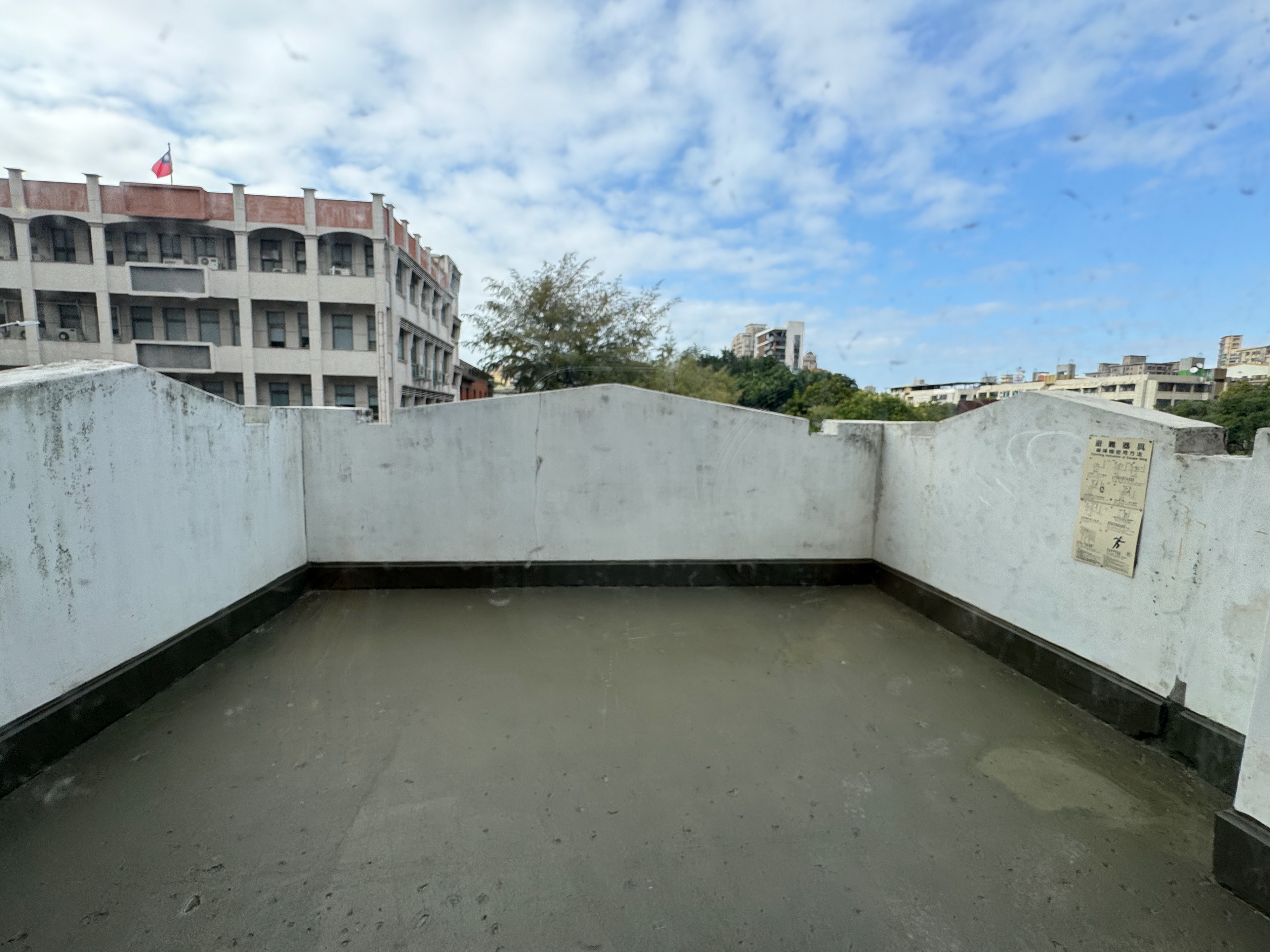
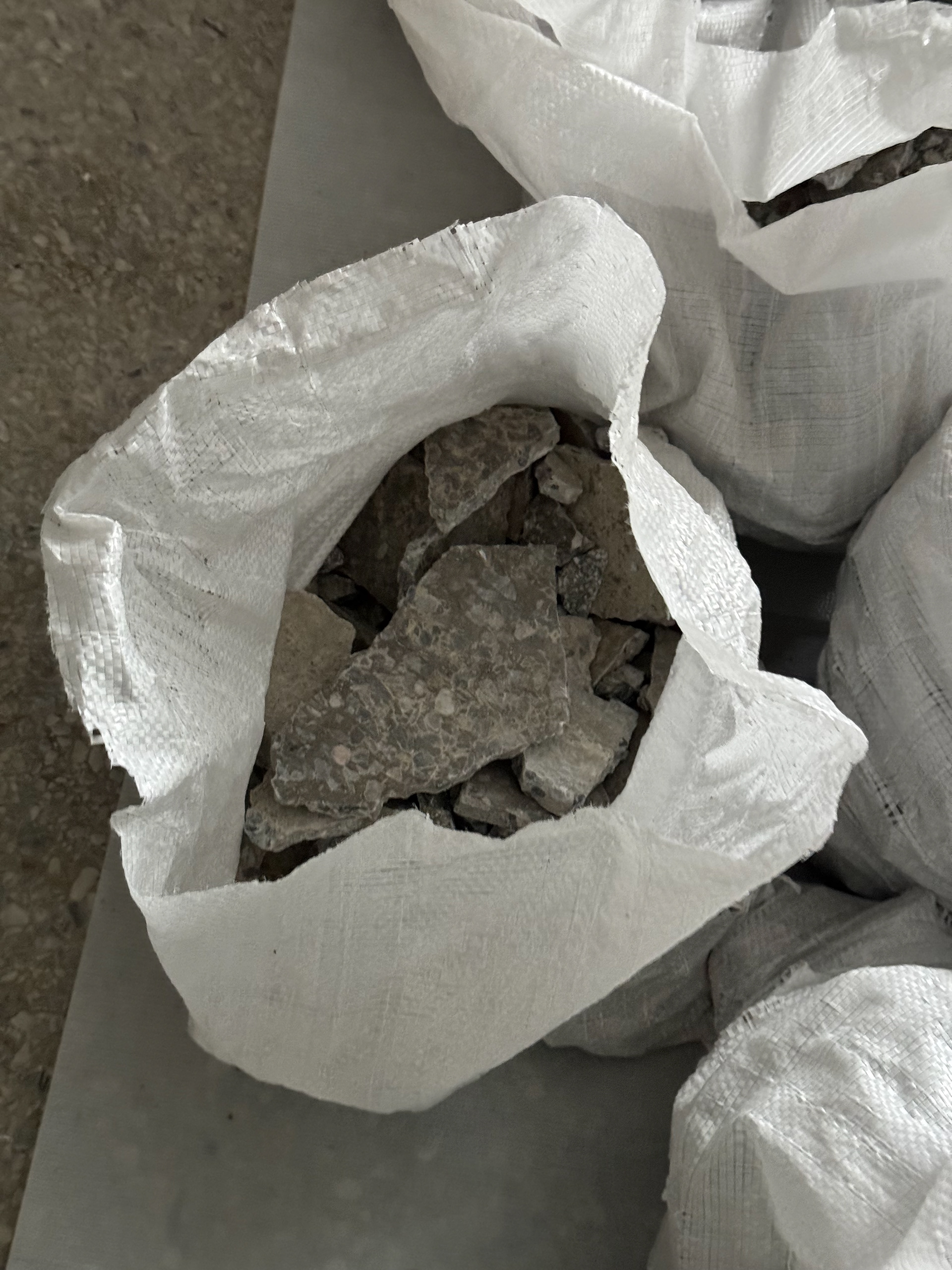
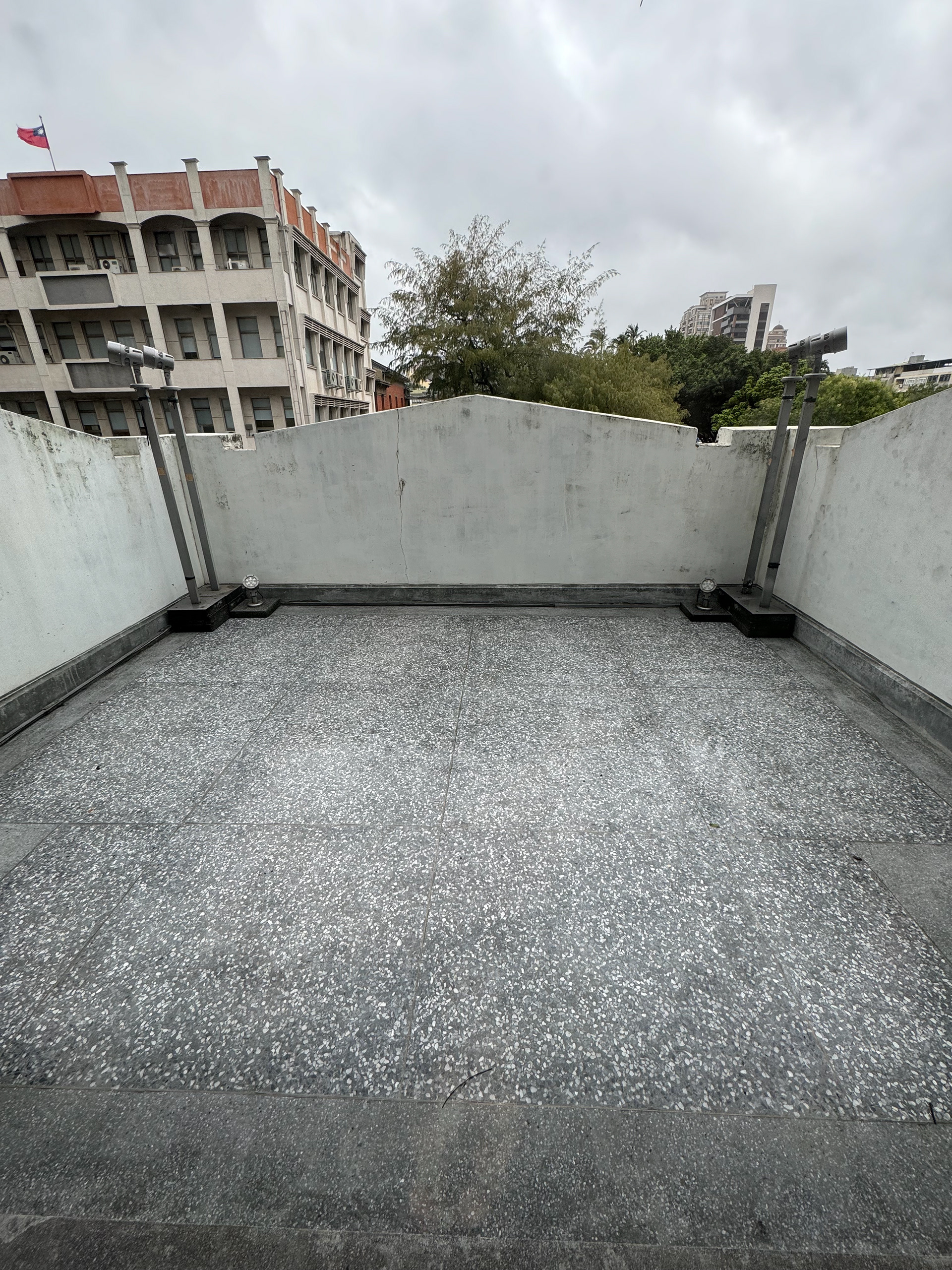
第二階段:屋頂外部的共生現象
遺構與自然的時間對話
在2025年「新竹市役所」屋頂修復工程期間,陳家翊觀察到多處需拆除的瓦片錯落堆疊,表面覆著長年累積的青苔與風化痕跡。屋頂的樋(排水系統)亦見植物自發生長,穿插於建築縫隙,與瓦片、泥沙、落葉交織出一種緩慢且持續生成的共生景觀。
這些原本未被預期的自然痕跡,並非僅是「待清除的殘跡」,而是記憶如何透過物質與環境共構、悄然延續於建築邊陲的有機證據。藝術家將其視為「歷史縫隙中悄然蔓生的記憶」,成為作品《碎景》的重要靈感來源。
Phase Two: Symbiotic Phenomena on the Rooftop
A Temporal Dialogue Between Ruins and Nature
During the 2025 rooftop restoration, Chen observed displaced and misaligned roof tiles marked for removal—some layered with moss, weathering, and decay accumulated over decades. Within drainage channels, wild plants had taken root, intertwining with leaves, sediment, and construction debris to create an evolving, slow-growing ecosystem.
These natural intrusions, far from being mere remnants to be cleared, are treated as organic evidence of memory persisting through co-construction between environment and matter. Chen considers these "memories silently germinating in the fissures of history," which became a vital inspiration for Broken Landscapes.
During the 2025 rooftop restoration, Chen observed displaced and misaligned roof tiles marked for removal—some layered with moss, weathering, and decay accumulated over decades. Within drainage channels, wild plants had taken root, intertwining with leaves, sediment, and construction debris to create an evolving, slow-growing ecosystem.
These natural intrusions, far from being mere remnants to be cleared, are treated as organic evidence of memory persisting through co-construction between environment and matter. Chen considers these "memories silently germinating in the fissures of history," which became a vital inspiration for Broken Landscapes.

新竹市美術館屋頂瓦片與植物共生實況


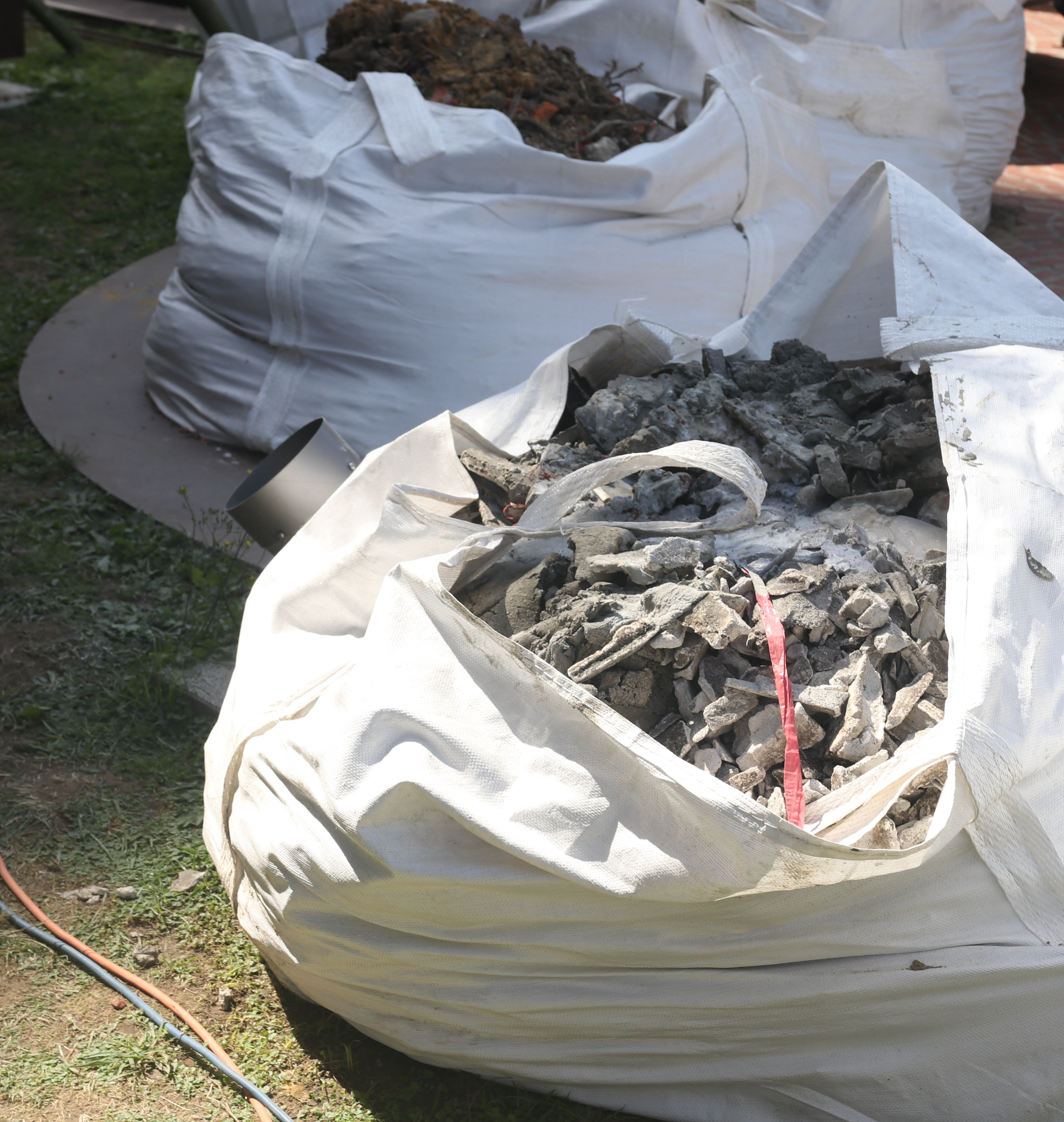
第三階段:隱藏空間的靈魂考古
建築縫隙中的觀看入口:木屋架與影像的穿透路徑
新竹市美術館屋頂內部的木屋架,也是二樓的天花板上方,在日常運作時天花板完全密閉,無法看到木屋架的空間。只有在修復期間開了一個小方口,得以窺視這個平時隱藏的建築內部結構。
藝術家以此「小方口」作為觀看與穿越的入口,透過3D掃描技術記錄修復期間難得開放的時空場域。掃描路徑從二樓開啟的小方口出發,穿越整個木屋架空間,延伸至屋頂外部的老虎窗、瓦片和植物共生的狀態。
Phase Three: Hidden Spaces and Spiritual Archaeology
Portal Through a Crevice: Timber Roof Structure and the Path of Moving Image
The timber truss above the second floor of the Hsinchu City Art Gallery remains sealed and invisible during ordinary operations. During restoration, a temporary square opening offered rare access to this concealed spatial void.
Chen used this narrow opening as both a visual portal and symbolic passage. Employing 3D scanning, she recorded the ephemeral temporal-spatial condition of the roof truss, following a trajectory from the opening on the second floor, through the timber framework, and extending outward to the dormer windows, rooftop tiles, and symbiotic vegetation.
The timber truss above the second floor of the Hsinchu City Art Gallery remains sealed and invisible during ordinary operations. During restoration, a temporary square opening offered rare access to this concealed spatial void.
Chen used this narrow opening as both a visual portal and symbolic passage. Employing 3D scanning, she recorded the ephemeral temporal-spatial condition of the roof truss, following a trajectory from the opening on the second floor, through the timber framework, and extending outward to the dormer windows, rooftop tiles, and symbiotic vegetation.

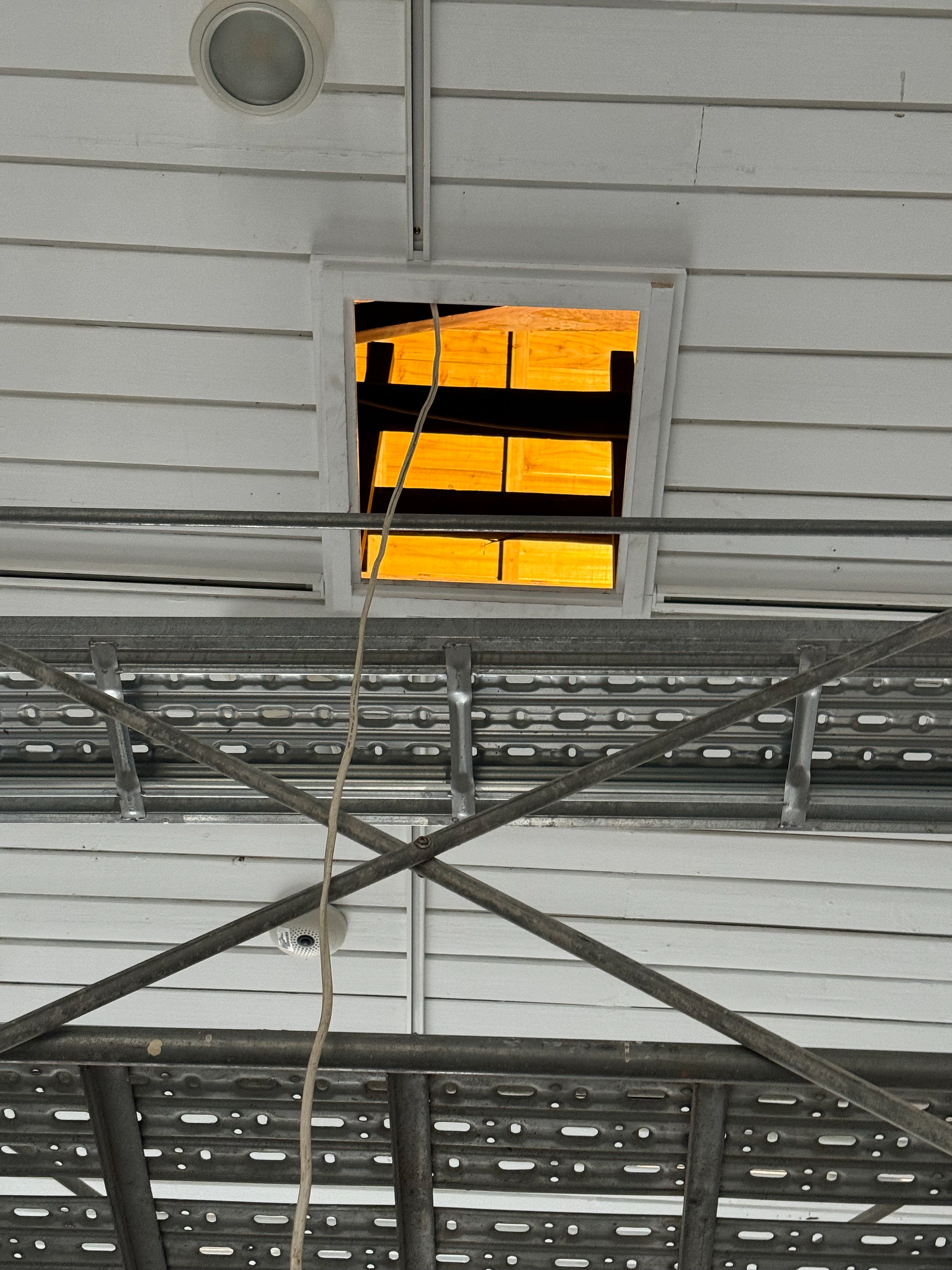
這段掃描與穿透的影像,結合實際收集到的建材和植物造景,構築成作品《碎景》的核心視覺路徑:一個讓觀者如靈魂般漫遊的入口,穿梭於建築的隱秘記憶之中。影像不再只是記錄,而是成為連接可見與不可見、當下與歷史、物質與精神的媒介。
當美術館的日常運作遮蔽了建築的內在構造,修復時段意外開啟的小方口成為了一個時空的裂縫,讓觀者得以進入建築深層記憶的通道,體驗那些隱藏在日常表面之下的空間詩學。
This scanned imagery, paired with actual salvaged materials and plant arrangements, constructs the central visual journey of the work—a dreamlike gateway through which viewers drift like spirits into the building’s quiet memory. The video transcends simple documentation, becoming a medium that links the visible with the unseen, the present with the historical, and the physical with the spiritual.
The opening created during restoration thus becomes a temporal fissure—an unexpected aperture through which the audience encounters the building’s deep interior and hidden spatial poetics.
The opening created during restoration thus becomes a temporal fissure—an unexpected aperture through which the audience encounters the building’s deep interior and hidden spatial poetics.
藝術形式|參與式記憶建構
《碎景》作為一件參與式空間裝置,其藝術形式本身即包含了觀者的能動參與。基於新竹美術館這一特殊歷史場域的特定脈絡,作品在藝術創作的形式設計中,有意識地將「微觀地景記憶」的集體建構納入作品的核心結構。藝術家邀請來自不同背景的參與者,透過觀察、組構與手作,共同創作承載場域記憶的生態瓶。
這一創作過程並非作品的附加活動,而是《碎景》這件藝術作品在面對古蹟修復現場時,針對「記憶如何透過物質殘留重新浮現」此一核心提問所發展出的必要藝術手法。個人經驗因此得以直接嵌入歷史與空間的敘事中,形成一種藝術形式上的「共時性記憶考古」。
《碎景》透過這種參與式的藝術語言,將作品本身構築為一個可被感知、被碰觸、被共構的記憶場域,讓藝術創作成為對歷史縫隙的當代回應方式。
Artistic Form|Participatory Memory Construction
"Broken Landscapes," as a participatory spatial installation, inherently incorporates active audience engagement within its artistic form. Based on the specific historical context of the Hsinchu City Art Museum, the work consciously integrates the collective construction of "micro-landscape memory" into its core artistic structure as a deliberate creative methodology.
The artist invites participants from diverse backgrounds to engage in observation, construction, and hands-on creation, collaboratively creating ecological terrariums that carry site-specific memory. This creative process is not an ancillary activity to the artwork, but rather a necessary artistic approach developed by "Broken Landscapes" in response to the central question of "how memory re-emerges through material remnants" when confronting the historic building restoration site.
Personal experiences are thus directly embedded within historical and spatial narratives, forming what could be termed "synchronous memory archaeology" as an artistic form. Through this participatory artistic language, "Broken Landscapes" constructs itself as a perceptible, tangible, and co-constructible memory field, making the artistic creation itself a contemporary mode of responding to historical crevices.
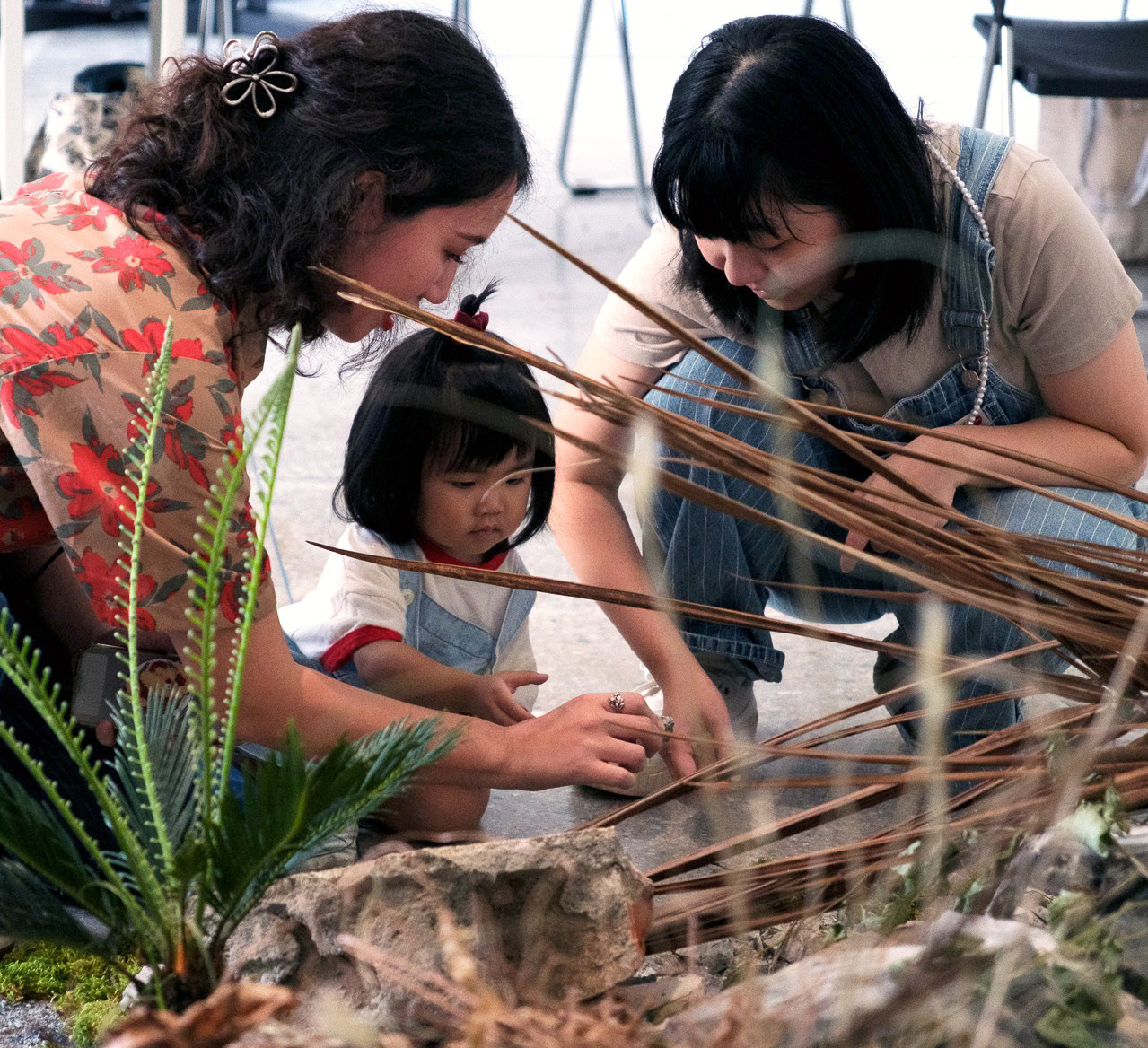



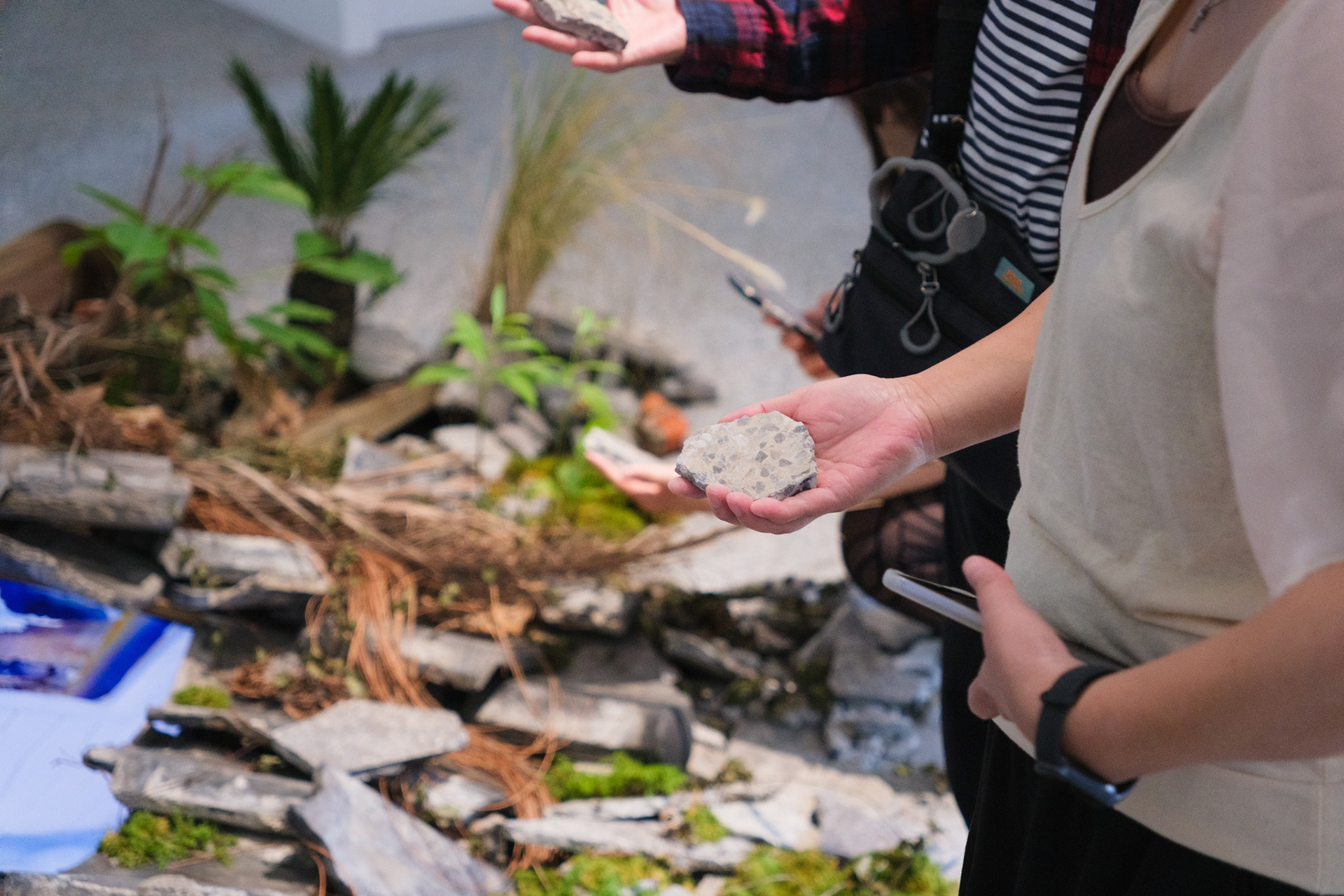
影像、廢棄建材(屋頂黑瓦片、磚塊、地板磨石子)、枯葉、植物、尺寸依場地而定
Video,Discarded building materials (Black roof tiles, Bricks, Terrazzo floor fragments, Wood blocks), Dried leaves, Plants